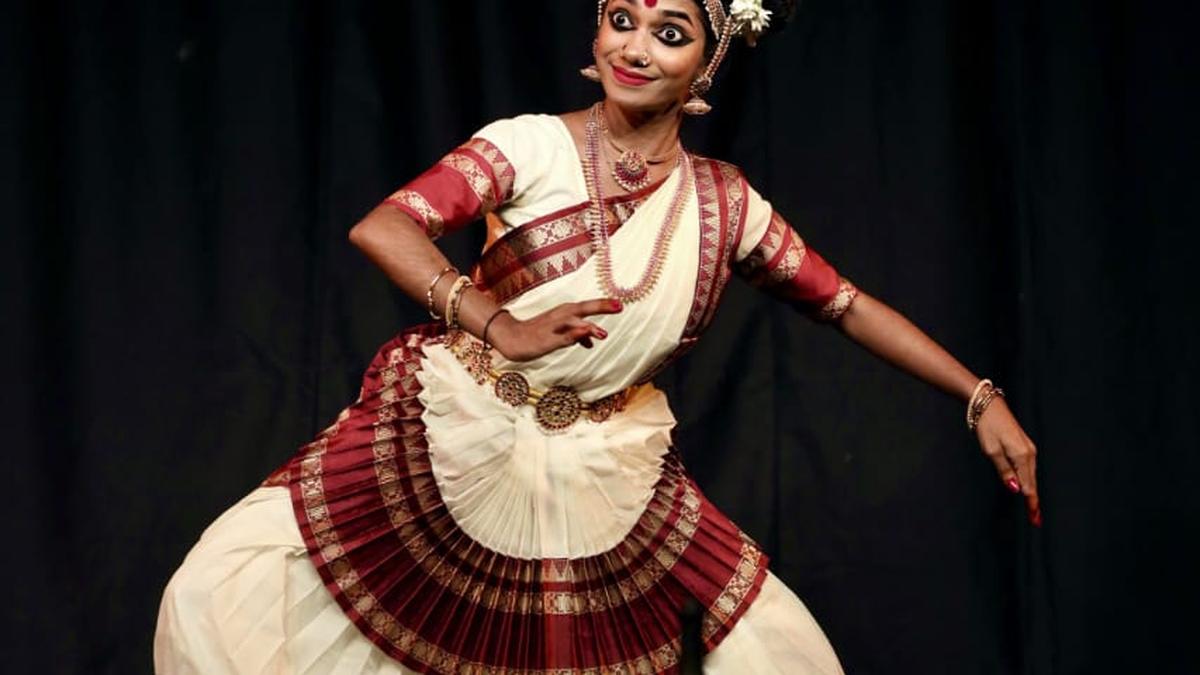Hridya Haridas
| Photo Credit: Special Arrangement
Among the choreographers of Mohiniyattam, Nirmala Panicker of Natanakaisiki, Irinjalakuda, stands out for her contribution in reviving certain aspects of the desi repertoire of the dance form.
For example, the forms of Polikali, Esal, Chandam and Kurathy were excluded when Mohiniyattam was revived in Kerala Kalamandalam in 1932, because of the degeneration of the dance form due to certain abominable practices during the previous century.
However, Nirmala maintains that Kurathy has been an intrinsic character in all the dance forms of South India.
In the Mohiniyattam recital staged at Kottichetham Studio Theatre in Natanakairali recently, Nirmala’s disciple Hridya Haridas staged ‘Mala Kurathy’. This was presented as part of Mohiniyattam Sandhya. The kurathy is an adept palm-reader from the hills, and arrives at Valluvanadu, a region on the northern banks of Nila River, a treasure trove of cultural traditions.
Guru Nirmala Panicker
| Photo Credit:
Special Arrangement
The choreography was unprecedented as the classical dance form of Mohiniyattam was dovetailed to the centuries-old folk theatre of Tholpavakoothu (shadow puppet theatre). Truly ingenuous of Nirmala.
Kurathy’s entry as a Mohiniyattam dancer was noteworthy for how she introduces herself. But her histrionic talents were revealed through a picturesque portrayal of the different types of folk art forms peculiar to Valluvanadu, such as ‘Poothan and Thira’, ‘Kaala kali’, ‘Thullal of velichappadu’ (shamanic priest) and ‘Kuhtira kali’.
Thereafter, she invites people interested in palm-reading. A childless couple shares their sorrow, and she advises them to offer Tholpavakoothu as an offering in a temple of Bhadrakali to propitiate the goddess.
Tholpavakoothu (shadow puppet theatre)
| Photo Credit:
Special Arrangement
But why, Tholpavakoothu that narrates the story of the Ramayana? That’s because Bhadrakali is disheartened that she missed seeing the ferocious fight between Rama and Ravana, and this shadow puppetry, performed only in temples dedicated to Bhadrakali, recreates it for her.
Traditionally performed by scholars of the Vellalachetti caste, the play is presented in a koothu madam, a specially built playhouse in the temple precincts. A white cloth spread on the front serves as the screen on which the shadows of specially designed puppets are cast.
Kottichetham, the Rama-Ravana fight and the coronation of Rama were showcased by artistes, led by Lakshmana Pulavar. The recital concluded with the re-entry of the dancer and mangalam.
Published – February 21, 2025 06:20 pm IST
